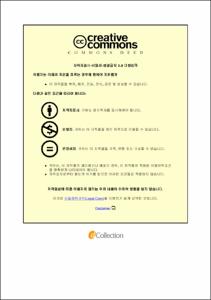Ulsan Univ. Repository
Thesis
General Graduate School
Architecture(5-year program)
1. Theses (Master)
냉간성형강 압축재의 중심압축실험을 통한 설계조항 적합성 검토
- Alternative Title
- Evaluating the Performance of Cold-Formed Members under Central Axial Compression
- Abstract
- 얇은 판을 가공하여 단면을 구성하는 냉간성형강 압축부재는 전체 좌굴과 함께 국부좌굴 또는 뒤틀림좌굴이 혼합되어 나타나므로 이에 대한 면밀한 안정성 검토가 요구된다. 이 논문에서는 최근 개정된 냉간성형강 설계기준에 대한 국내의 박 판 냉간성형강 소재의 적합여부와 압축재로서의 성능 만족여부를 확 인하고자 하였다. 공칭항복강도 275 MPa 급의 일반강재와 항복강도 420 MPa 급의 고강도강재를 선정하여 냉간단조성형으로 압축재를 제 작하고, 중심압축실험을 수행하여 기둥세장비와 단면형상에 따른 좌 굴거동을 확인하였다. 또한 실험 셋업에서 구현하지 못한 다양한 기 둥세장비에 따른 좌굴강도를 수치적으로 평가하기 위해 유한요소해석 모델을 구성하여 좌굴강도를 도출하였다. 또한 부재의 해석을 위해 해석 시간을 단축시킨 수정된 해석모델을 구성하고 앞선 해석 결과와 비교하여 적합성을 확인하였으며, 이를 통해 추가적인 유효좌굴길이 를 가지는 부재의 좌굴강도를 도출하였다. 실험결과 및 해석결과를 통해 냉간성형강 설계기준에서 제시하는 적용사항을 검토하였다. 유 효폭법과 직접강도법으로 산정한 강도는 중심압축실험강도보다 다소 보수적인 결과를 보였으나, 유한요소해석을 바탕으로 산정한 다양한 기둥세장비의 강도와 비교할 경우 비교적 잘 부합함을 나타내었다. 열간성형강에 대한 설계기준인 강구조 부재 설계기준(KDS 14 31 10) 으로 산정한 공칭압축강도는 중심압축실험결과 및 유한요소해석 결과 와 비교할 시 매우 큰 편차를 보였으며, 냉간성형강의 좌굴강도에 대 한 예측이 부정확함을 나타내었다. 실험적, 해석적 결과를 바탕으로 최근 개정된 냉간성형강 설계기준 의 압축재 조항 적용적합성을 확인하였고, 열간성형강 설계기준을 적 용하는 것이 부적절함을 입증하였다.|Since the cold forming steel compression member formed by processing a thin plate is mixed with local buckling or distortion buckling along with the entire buckling, a close stability review is required.
In this paper, we tried to confirm whether the domestic thin-plate cold-formed steel material is suitable for the recently revised cold-molded steel design standards and whether the performance is satisfied as a compression member. General steel with a nominal yield strength of 275 MPa and high-strength steel with a yield strength of 420 MPa were selected to produce compression materials through cold-forming, and a central compression test was performed to confirm buckling behavior according to column slenderness ratio and cross-sectional shape. In addition, in order to numerically evaluate the buckling strength according to various column detail equipment that was not implemented in the experimental setup, a finite element analysis model was constructed to derive the buckling strength. In addition, for the analysis of the members, a modified analysis model that shortened the analysis time was constructed and the suitability was confirmed by comparing it with the previous analysis results, and through this, the buckling strength of members with an additional effective buckling length was derived. Through the experimental and FEA results, the applications presented in the design criteria for KDS 41 30 30 were reviewed. The strength calculated by the effective width method(EWM) and the direct strength method(DSM) showed somewhat more conservative results than the central compression experimental strength, but it was found to be relatively well matched when compared with the strength of various column detail equipment calculated based on the FEA. The nominal compressive strength calculated by the steel structural design code(KDS 14 31 10), which is the design standard for hot-rolled steel, showed a very large deviation compared to the central compression test and FEA results, indicating that the prediction of the buckling strength of cold-formed steel was inaccurate.
Based on experimental and analytical results, the suitability of applying the compression material provisions of the recently revised design standards for cold-formed steel(KDS 41 30 30) was confirmed, and it was concluded that it was inappropriate to apply the design standards for hot forming steel.
- Issued Date
- 2024
- Awarded Date
- 2024-02
- Type
- Dissertation
- Alternative Author(s)
- Sang-Woo Park
- Affiliation
- 울산대학교
- Department
- 일반대학원 건축공학전공
- Advisor
- 김대경
- Degree
- Master
- Publisher
- 울산대학교 일반대학원 건축공학전공
- Language
- kor
- Rights
- 울산대학교 논문은 저작권에 의해 보호받습니다.
- Appears in Collections:
- Architecture(5-year program) > 1. Theses (Master)
- 파일 목록
-
-
Download
 200000733519.pdf
기타 데이터 / 49.9 MB / Adobe PDF
200000733519.pdf
기타 데이터 / 49.9 MB / Adobe PDF
-
Items in Repository are protected by copyright, with all rights reserved, unless otherwise indicated.